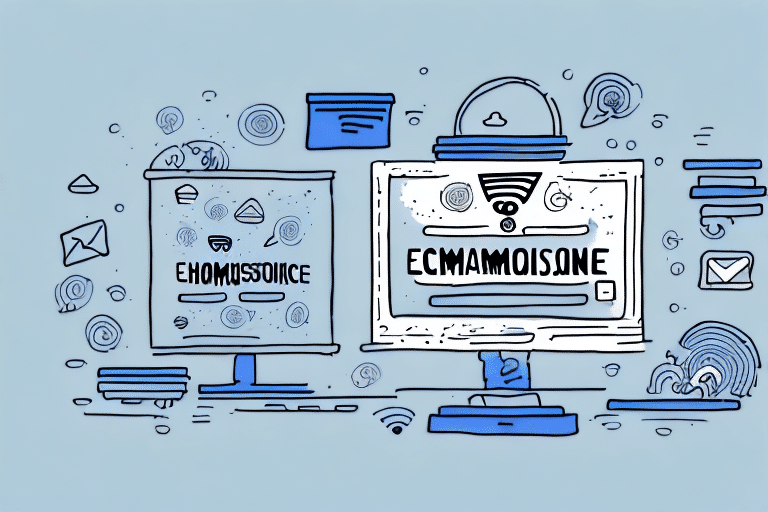Why Multi-Channel Marketing is Essential for Ecommerce at Scale
In the competitive Ecommerce landscape, businesses must adopt strategies that set them apart. Multi-Channel Marketing enables companies to reach customers across various platforms such as social media, marketplaces, search engines, and more. This diversification not only enhances visibility but also drives revenue growth.
Expanding Reach and Boosting Revenue
With millions of shoppers online, leveraging multiple channels increases the chances of connecting with potential customers. According to Statista, global Ecommerce sales amounted to over $5 trillion in 2023, highlighting the vast opportunities available.
Gathering Comprehensive Customer Data
Utilizing multiple channels allows businesses to collect diverse data points, offering deeper insights into customer behavior and preferences. This information can be used to tailor marketing messages and product offerings, fostering increased customer loyalty and repeat purchases.
Risk Mitigation and Flexibility
Relying on a single sales channel poses risks, such as changes in platform policies or algorithms. A multi-channel approach spreads these risks, ensuring that your business remains resilient against unexpected shifts in the market.
Developing an Effective Multi-Channel Marketing Strategy
Understanding the Basics
At its core, Multi-Channel Marketing involves promoting products or services across multiple platforms while maintaining a consistent brand presence. This integrated approach ensures that customers have a seamless experience, regardless of the channel they choose.
Identifying the Right Channels
Selecting appropriate channels should be based on where your target audience is most active. Conduct thorough research to determine the platforms your customers frequent. Tools like Google Analytics can provide valuable insights into customer behavior.
Creating a Comprehensive Marketing Plan
An effective plan outlines your target audience, selected channels, and specific marketing tactics for each platform. It should include clear objectives, budget allocations, timelines, and measurable goals aligned with your business objectives.
Implementing Best Practices
- Consistency is Key: Ensure that your brand messaging and visuals are uniform across all channels.
- Leverage Data Analytics: Regularly analyze performance metrics to inform strategic adjustments.
- Adaptability: Stay flexible to pivot strategies based on market trends and customer feedback.
Measuring and Optimizing Performance
Key Performance Metrics
Track metrics such as website traffic, conversion rates, customer acquisition costs, and retention rates to assess the effectiveness of your marketing efforts.
Integrating Data Analytics
Advanced analytics tools can help interpret complex data sets, providing actionable insights. Platforms like Tableau and Power BI are excellent for visualizing data trends.
Leveraging AI and Machine Learning
Artificial Intelligence (AI) and Machine Learning (ML) can automate data analysis, predict customer behavior, and personalize marketing campaigns. Implementing these technologies can significantly enhance targeting accuracy and ROI.
Overcoming Challenges and Avoiding Common Mistakes
Maintaining Consistent Brand Identity
Ensuring a uniform brand voice and visual style across all channels is crucial for building brand recognition and trust.
Prioritizing Channels Effectively
Focus on channels that deliver the highest ROI instead of spreading resources too thin across too many platforms.
Adaptability to Market Changes
Stay informed about industry trends and be prepared to adjust your strategies to remain competitive and relevant.
Case Studies and Future Trends
Successful Implementations
Companies like Amazon and Sephora have effectively utilized multi-channel marketing to enhance customer experience and drive sales. Amazon leverages its advertising services to promote products efficiently, while Sephora integrates social media, in-store experiences, and mobile apps to create cohesive customer journeys.
Emerging Trends and Predictions
The future of Multi-Channel Marketing is set to be shaped by advancements in AI, augmented reality (AR), and virtual reality (VR). Personalization and interactive customer experiences will become increasingly important, enabling businesses to engage customers in more meaningful ways.
Tips for Managing and Scaling Multi-Channel Marketing Efforts
- Start Small: Begin with one or two key channels and expand as you gain more insights and resources.
- Utilize Automation Tools: Tools like Hootsuite and Mailchimp can streamline your marketing processes.
- Regularly Analyze Performance: Continually monitor analytics to identify opportunities for improvement.
- Set Achievable Goals: Define clear, measurable objectives to guide your marketing efforts and track progress.
Avoiding Common Mistakes in Multi-Channel Marketing
- Spreading Your Budget Too Thin: Concentrate resources on high-performing channels rather than attempting to be present everywhere.
- Uniform Messaging Across All Channels: Customize your content to suit the unique requirements and audience of each platform.
Creating a Seamless Customer Experience
A cohesive journey across all marketing channels ensures that customers recognize and trust your brand. Maintain consistent messaging, respect each channel's unique features, and leverage each platform's strengths to effectively promote your products or services.
Conclusion
Multi-Channel Marketing remains a vital strategy for success in the Ecommerce sector. By adhering to best practices, selecting the right channels, utilizing data-driven insights, and staying abreast of emerging trends, businesses can effectively enhance their marketing efforts, drive sales, and foster customer loyalty.






















